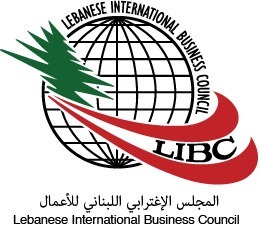Capturing Opportunities and Opening New Revenue Streams through Industry Digitalization
In the digital era, the telecommunications market is arguably more competitive than it has ever been. With the global technological transformation well underway, governments, industries, and individuals alike have become increasingly dependent on the digital tools, services, and solutions provided and managed by telecoms operators. As such, it is up to ICT players to uncover new opportunities and take advantage of untapped markets in order to prosper now and in the future. They must be able to competently and cost-efficiently deploy an extensive portfolio of use cases, fulfill the appropriate roles within customers’ ecosystem or value chain, and execute the relevant go-to-market models to maximize ROI.
In a previous study by Ericsson1 the global ICT provider found that in today’s digitally-driven business landscape, operators can benefit from an additional 36 percent revenue from 5G-enabled industry digitalization market opportunities by 2026. With an additional revenue of up to USD 619 billion available to operators, industry digitalization via 5G and IoT presents huge financial opportunities in the next decade.
In a follow-up report, “The Guide to Capturing the 5G Industry Digitalization Business Potential,”2 Ericsson analyzed more than 400 industry digitalization use cases across 10 vertical markets to define the operator 5G market opportunities starting from a use case perspective.
Ericsson identified over 200 use cases where 5G is expected to play a major role in the coming years, grouped them into clusters by applications, and created a comprehensive guide for operators to address challenges and maximize the business potential of 5G and IoT across several major industries.
By clustering use cases into 5G and IoT applications, they provide a more sizable opportunity through shared investments across a larger revenue pool and increased scalability and adaptability across industries.
Clustering use cases into 5G and IoT applications like this is also advantageous in terms adaptability, which enables operators to address the possibilities for 5G and IoT in industry digitalization today and ultimately capture their full business potential in lasting and sustainable ways. For instance, use cases in the ‘monitoring and tracking’ cluster may be executed today through monitoring technologies; from there, they can easily be adapted using 5G to provide real-time monitoring services; and finally, using 5G and IoT in tandem, they can evolve into end-to-end life cycle management solutions.
In a similar fashion, business and monetization models will need to evolve in order to capture the maximum value. In this regard, operator ambitions are key: while some clusters of 5G and IoT applications are more difficult to deploy or present greater challenges from a go-to-market perspective, these may also offer the greatest market size and ROI. For example, the greatest market opportunities are in enhanced video services and real-time automation – but both pose relatively large deployment and go-to-market challenges.
With industry digitalization comes fast-growing new revenue pools, and capturing this opportunity is high on the executive agenda for most operators. As such, implementing a roadmap for the successful introduction of digitalization revenues will be vital for operators to compete in a saturated ICT market. Operators will need to address questions of relevance, difficulty, and feasibility in terms of 5G and IoT use case applications, and they will need to identify current examples of ongoing operator-driven 5G and IoT business models as well as concrete first steps towards becoming key drivers of industry digitalization moving forward.
5G and IoT are powerful pieces of technology at operators’ disposal in capturing the revenue potential opportunities from industry digitalization. By targeting industries undergoing digital transformation, identifying the most applicable use case clusters, and building an actionably strategy for implementing next generation technologies in this regard, operators can evolve to keep pace with the worldwide technological transformation and seize opportunities for sustainable growth in the same stride.
Source: By Chafic Traboulsi, Head of Networks for Ericsson Middle East and Africa



Comments are closed, but trackbacks and pingbacks are open.